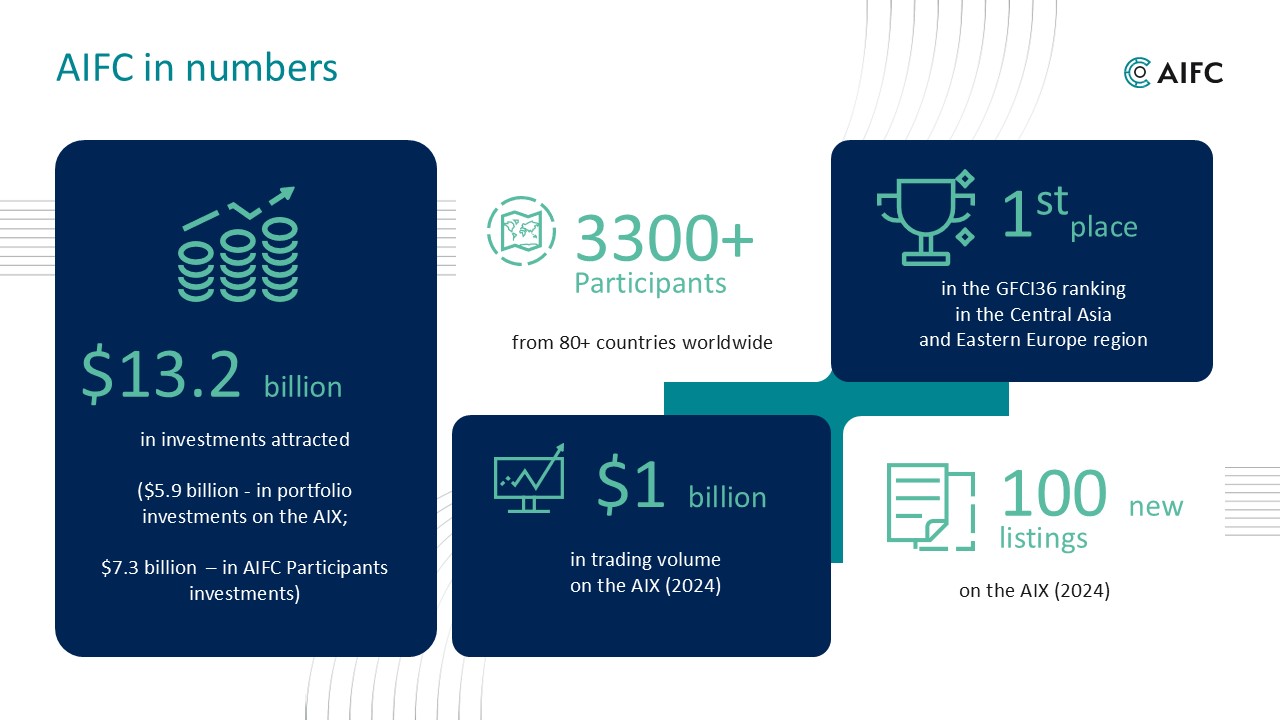Forbes: Goldman Sachs Follows China Into Kazakhstan 8 November 2018 It’s not for the long freezing winters or the haute cuisine, but Goldman Sachs is heading to Astana, the capital of the ex-Soviet republic of Kazakhstan. Goldman announced on October 1
It’s not for the long freezing winters or the haute cuisine, but Goldman Sachs is heading to Astana, the capital of the ex-Soviet republic of Kazakhstan.
Goldman announced on October 1 that it was joining the Astana International Exchange(AIX). Kazakhstan’s reformist-minded financial market is the first of its kind in Central Asia and counts the Shanghai Stock Exchange and China’s Silk Road Fund as shareholders, and the Nasdaq as a technology partner. Goldman did not respond to requests for comment about how much they’ve invested, but their press office confirmed their entry into one of one of the hottest markets in Eurasia. FTSE and MSCI do not yet consider KZ an emerging market.
Goldman Sachs bought 108,480 ordinary shares of the Astana stock market, meaning they own 4.1% of AIX . But just in case this pie-in-the-sky exchange doesn’t work out according to plan, they also entered into a 5-year put option agreement with the one-year-old Astana International Financial Center (AIFC) Authority as insurance.
The Astana International Financial Center is AIX’s home. It is a symbol of modern, pro-Western, pro-capitalist Kazakhstan. Reminiscent of Disney’s spherical Epcot Center, it was built as part of last year’s World Expo 2017 held in Kazakhstan.
There is nothing like this in the former Soviet Republics, especially in Central Asia. The 78-year-old Nazarbayev says he plans on making Kazakhstan one of the 30 top most-developed countries in the world by 2050. It remains a standout. In the latest Doing Business report by the World Bank, KZ beats Russia.
I was told that AIFC is sort of a bootstrapping exercise, not unlike what Singapore accomplished decades ago. Every European investor with money in KZ gives it at least an A for effort, but execution is a different matter.
During the Astana Economic Forum in May, the general consensus among the business community there was that the Center seems like a great idea—an undeniably good opportunity for high finance and big multinationals. But concern remains over how AIFC’s success will translate to the small and midsize business owner’s living outside of Astana.
“One of our main goals is the development of the economy of Kazakhstan and the region,” AIFC’s manager Ayan Adilbekov told me. It’s billed as the Kazakh 21st-century commercial center; with nonfinancial companies and fintech firms like Finclusion from Thailand and U.K.-based Paysend setting up offices there.
The AIFC jurisdiction is based on U.K. law. It brings companies into the fold via tax breaks, including for small and mid-sized operations that can actually move their operations there. So far, some 80 companies are registered within the AIFC, which is like a country within a country in terms of both legal and fiscal benefits.
Kazakhstan is the Central Asia buckle of China’s Belt and Road initiative , receiving hundreds of millions of dollars for infrastructure investments ranging from railroads to oil pipelines and a dry port along its border to ship goods by rail into Europe.
“We have access to China’s capital pools and liquidity,” says Adilbekov.
Meanwhile, Nasdaq worked with AIX on trading systems and technologies that will make the young AIX work like a modern exchange. AIX allows KZ locals access to global brokers that meet the usual legal requirements. Nasdaq has similar setups in Lithuania.
AIFC did not respond to questions about the government’s privatization plans, however. This is likely one of the key reasons why Goldman is involved in the exchange, to get a first look at the opening up of new state-owned enterprises to foreign investors.
Kazakhstan’s population is smaller than that of Shanghai, with just around 18 million inhabitants. Per capita income in dollars is around $8,500, about $1,000 less than Brazil, according to Focus Economics.
Its unemployment rate sits at around 5%, with real interest rates close to 3%. The country’s public debt as a percentage of GDP is just 26%, compared to around 80% for Brazil and Argentina, though its economy—still heavily reliant on hydrocarbons—is not as diverse as either of them. By comparison, at least, as a smallish frontier market, it has one of the more exciting free-market projects out there.
There is a chance that the reformist-minded Nazarbayev government gives KZ a boost in terms of market prowess; a market which is still all about extraction industries and speculative-grade corporate bonds. Everyone sees it as the best of the “Stans,” those majority Muslim, mostly secular ex-Soviet nations just south of Russia.
Washington likes Kazakhstan. President Nazarbayev visited in January and met with President Trump, and his Uzbek counterpart, Shavkat Mirziyoev followed suit in May. Both Uzbekistan and Kazakhstan announced U.S. private-sector deals worth around $15 billion following those meetups.
Like the Russians, KZ’s central bank has been tasked with fixing the struggling banking sector and cleaning up the financial system. They’ve closed three lower level banks this year.
AIFC’s success is linked with the health of Kazakhstan’s economy and financial markets. State lenders dominate everything, making it harder for certain sectors of the economy, especially small and midsize businesses, to get loans from the big banks. It seems they are aware of this.
“We need to enhance the efficiency of managing pension assets and social insurance system resources, and effectively develop alternative financial tools like a securities market, and insurance,” Nazarbayev said in a State of the Country address on October 5.
That’s the long game for Astana, which is better than no game at all.
“AIFC [will] play a pivotal role in providing business with foreign investment and access to capital,” Nazarbayev said.
If Kazakhstan’s financial center and the AIX succeeds, that’s an opportunity for Goldman Sachs, freezing winters aside.
Source: Forbes.com
Photo: Richard Drew, File
Author: Kenneth Rapoza







